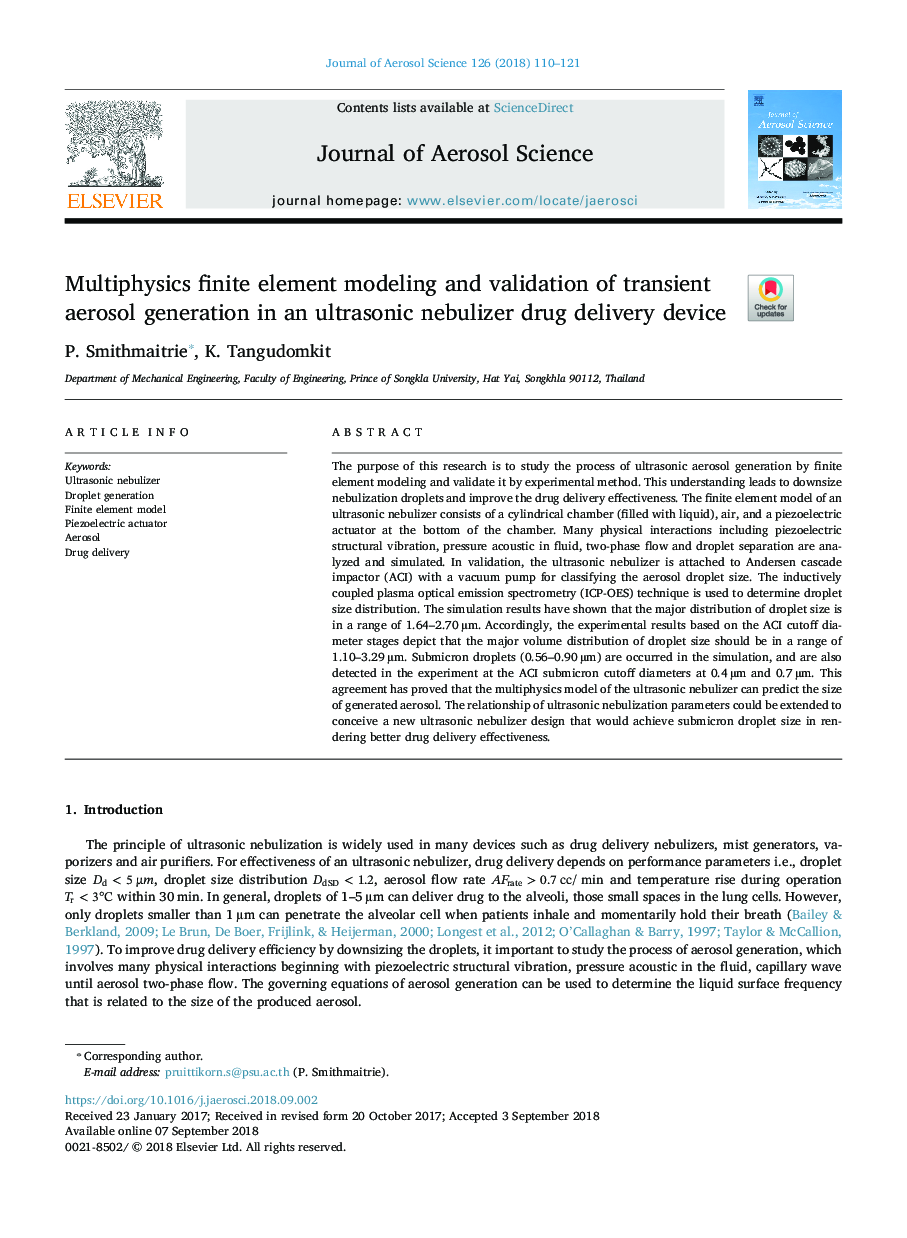| Article ID | Journal | Published Year | Pages | File Type |
|---|---|---|---|---|
| 10130298 | Journal of Aerosol Science | 2018 | 12 Pages |
Abstract
The purpose of this research is to study the process of ultrasonic aerosol generation by finite element modeling and validate it by experimental method. This understanding leads to downsize nebulization droplets and improve the drug delivery effectiveness. The finite element model of an ultrasonic nebulizer consists of a cylindrical chamber (filled with liquid), air, and a piezoelectric actuator at the bottom of the chamber. Many physical interactions including piezoelectric structural vibration, pressure acoustic in fluid, two-phase flow and droplet separation are analyzed and simulated. In validation, the ultrasonic nebulizer is attached to Andersen cascade impactor (ACI) with a vacuum pump for classifying the aerosol droplet size. The inductively coupled plasma optical emission spectrometry (ICP-OES) technique is used to determine droplet size distribution. The simulation results have shown that the major distribution of droplet size is in a range of 1.64-2.70â¯Âµm. Accordingly, the experimental results based on the ACI cutoff diameter stages depict that the major volume distribution of droplet size should be in a range of 1.10-3.29â¯Âµm. Submicron droplets (0.56-0.90â¯Âµm) are occurred in the simulation, and are also detected in the experiment at the ACI submicron cutoff diameters at 0.4â¯Âµm and 0.7â¯Âµm. This agreement has proved that the multiphysics model of the ultrasonic nebulizer can predict the size of generated aerosol. The relationship of ultrasonic nebulization parameters could be extended to conceive a new ultrasonic nebulizer design that would achieve submicron droplet size in rendering better drug delivery effectiveness.
Keywords
Related Topics
Physical Sciences and Engineering
Earth and Planetary Sciences
Atmospheric Science
Authors
P. Smithmaitrie, K. Tangudomkit,
